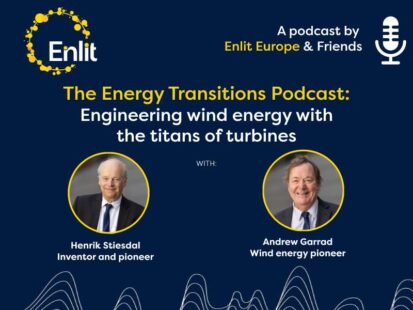
A minimum of controls and a maximum of simplicity used to be the defining characteristics of wind turbines. However, over the past few decades, turbines have become highly sophisticated and are now the world’s biggest rotating machines.
In this episode of the Energy Transitions Podcast, Pamela Largue speaks to two pioneers of the wind industry. Referred to as the Godfathers of wind, Denmark’s Henrik Stiesdal and Britain’s Andrew Garrad, winners of the 2024 Queen Elizabeth Prize for Engineering, describe how turbines have advanced over the years.
From building turbines in their parent’s fields in the 70’s, these two stalwarts have been on the boundary of what is possible, contributing to and witnessing wind turbines become an important contributor to the electricity supply and having a greater impact on the grid.
“Gradually, as the turbines got bigger and bigger, they also became more and more complicated…going from something like a tractor in the early 80’s to more like a giant helicopter now…”
Andrew Garrad
The old turbines were heavier, whereas now they are lighter and smarter with enhanced controls, said Stiesdal. “They did not become more complicated just because engineers like to make them like that…they got more complicated partly because we needed them to change their behaviour,” he added.
Stiesdal and Garrad explain why bigger isn’t always better and why the industry now needs to focus on increasing efficiency and reliability rather than size. They also discuss why floating offshore wind will provide the next quantum leap in wind turbine technology.
LISTEN NOW
Subscribe and listen to all episodes of the Energy Transitions Podcast
Previous episodes:
How to de-risk cleantech investments
Marine energy – From bathtub to the big blue
Why fusion energy is the ‘vaccine of climate change’
More about wind energy:
Site visit: Europe’s biggest offshore wind port
How to embrace circularity in wind power
A deep dive into joined-up offshore energy in the North Sea








